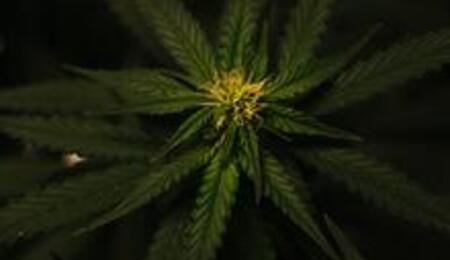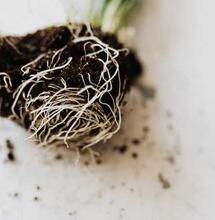Cannabis Nutrition- Molybdenum

Molybdenum is found only in oxidation states within minerals. Molybdenum plays an essential role in all living organisms. For plant growth, molybdenum has several functions. It is a catalyst for two essential enzyme functions that help with nitrogen-fixing and reduction. Molybdenum also assists the oxygen and sulfur cycles and helps with potassium uptake.
Molybdenum is more available and easier to take up in alkaline soils with a higher pH. Plants only need a minimal amount of molybdenum which they take up from reserves that have broken down in the ground from minerals over time.
In indoor growing, plants receive molybdenum through the nutrient feed in the form of molybdate (Mo042-) at 0.04-0.08 ppm. It is only required in minimal amounts. While some plants can tolerate high amounts, its absence can severely affect your crop.
Molybdenum deficiencies are so rare that it wasn't identified as a mineral that plants required for a long time. It is near enough, always available in low but consistent amounts. Like many micronutrient deficiencies, it is easy to confuse one for another. Molybdenum deficiency would look a lot like a nitrogen deficiency. The difference is that a nitrogen deficiency would start at the base of the plant. In contrast, a molybdenum deficiency would begin in the middle of the plant and move upwards.
To correct any micronutrient deficiency, first look at the pH of your medium. It should be more alkaline, around 6 (but no more than 6.5), to allow optimum uptake of all nutrients. If you find it is too acidic, you could use lime to reduce the acidity of your medium or flush the whole medium through and then use a feed or a boost but at a slightly lowered pH rate. A great way to get more molybdenum into your plants is through foliar feeding. The leaves can quickly absorb the element. Still, no excess is left in the soil. Monitoring sulfur and phosphorous levels are helpful, too, as their levels usually correlate with a lack of molybdenum.
Molybdenum toxicity is as rare as a deficiency. Any symptoms will probably be signs of defects from more than one element. High levels of molybdenum can reduce the absorption of other nutrients, particularly copper. If it occurred, molybdenum toxicity would probably be caused by a soil pH that is too alkaline. It could also arise from the accumulation of molybdenum in the soil from over application or a feeding regime that is too frequent. It would be because the conditions are too favourable for molybdenum, which is then taken up too quickly by the plant.
To treat any toxicity problem, check the pH of your soil, and if you find it is too high at 6.5 or above, you could try using an application of sulfur to bring the pH down. It is also advisable to flush the medium out for a day or two in an attempt to leach excess nutrients from the soil.



.png)
